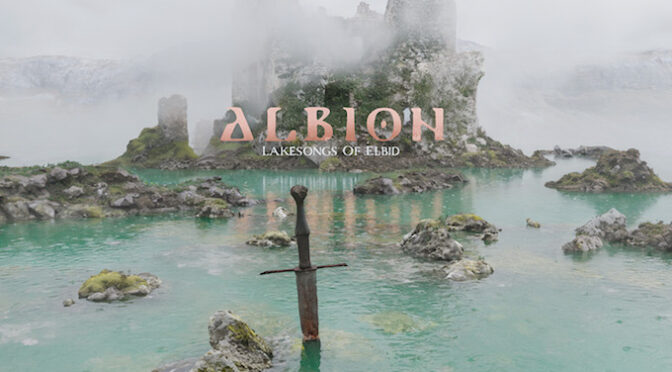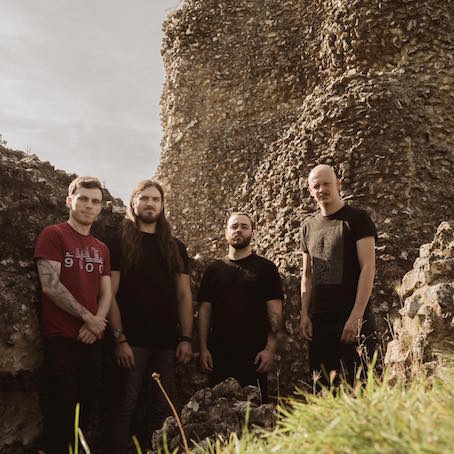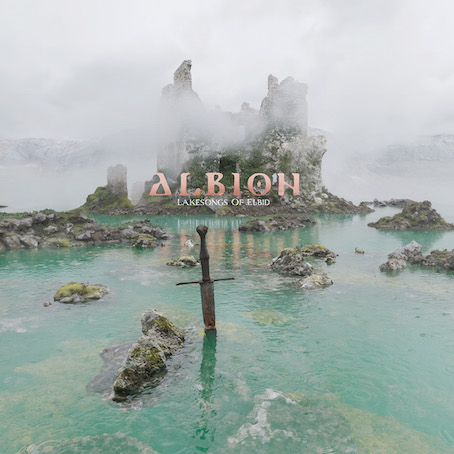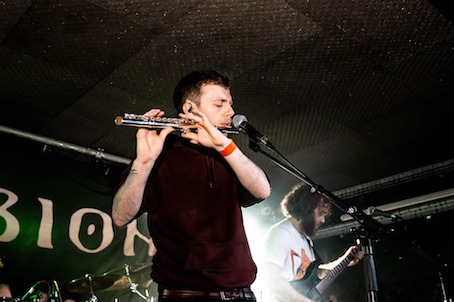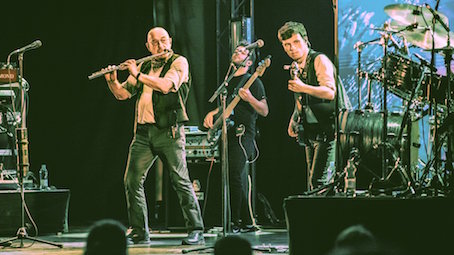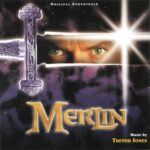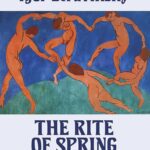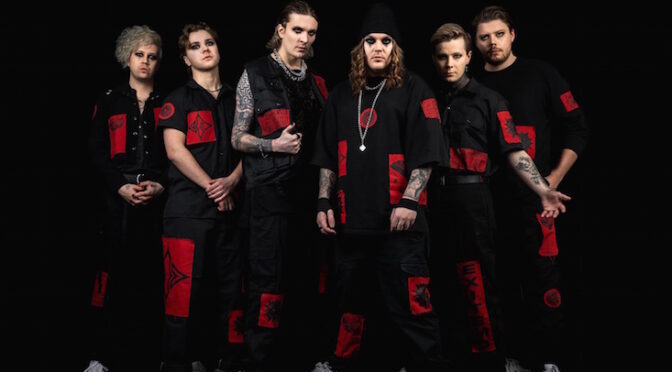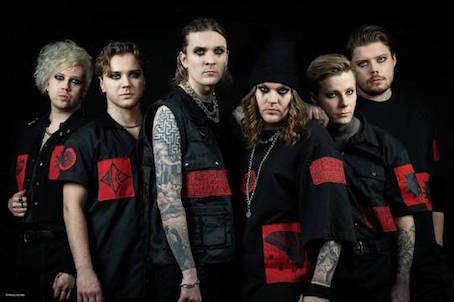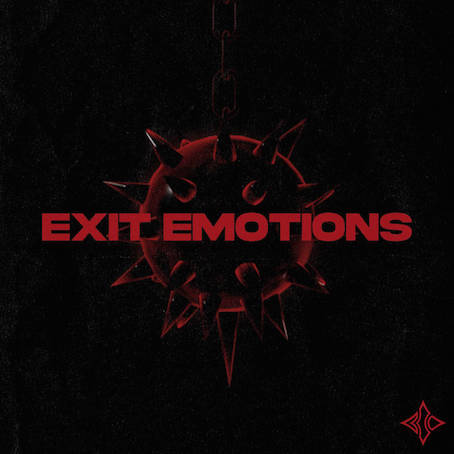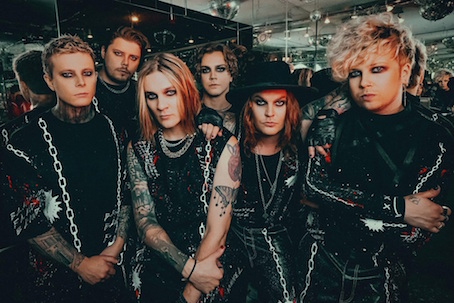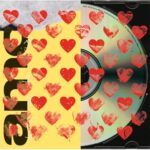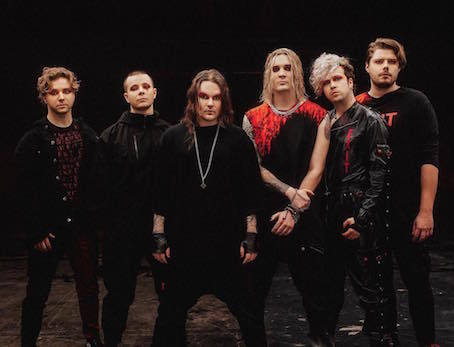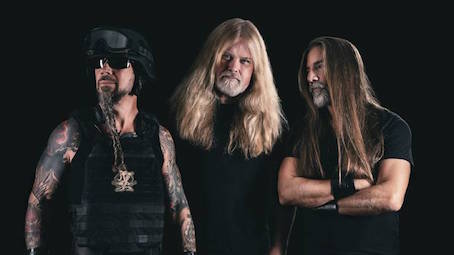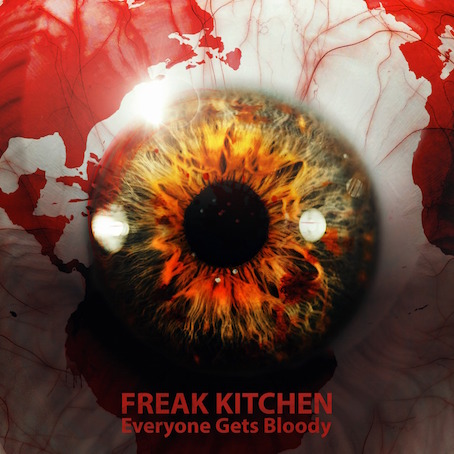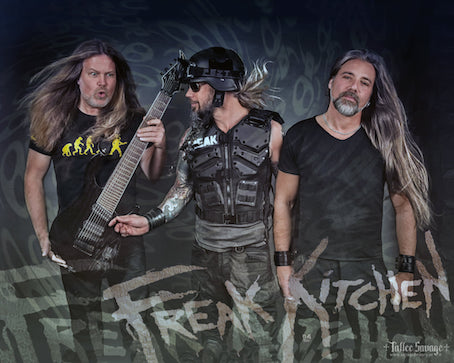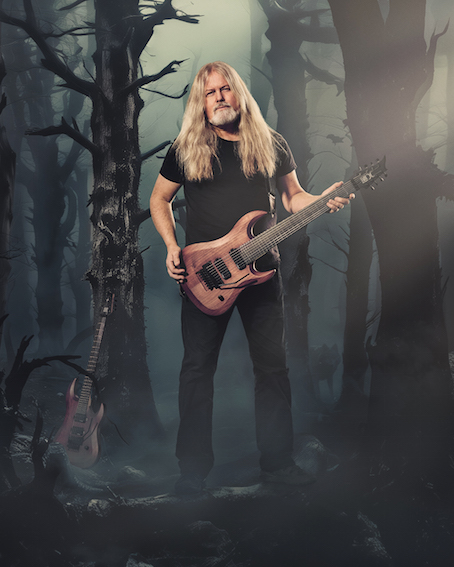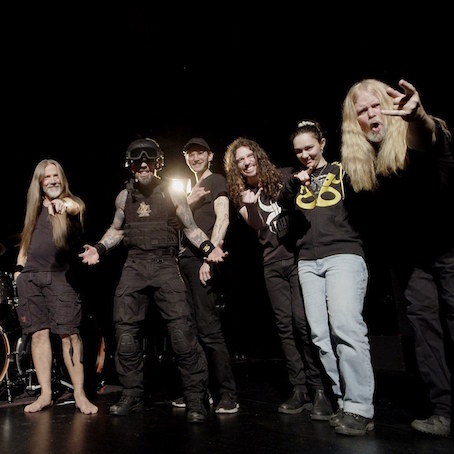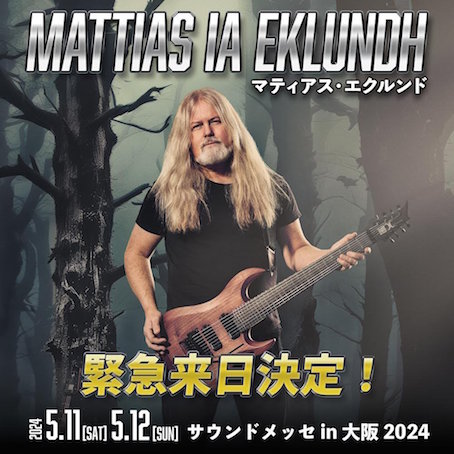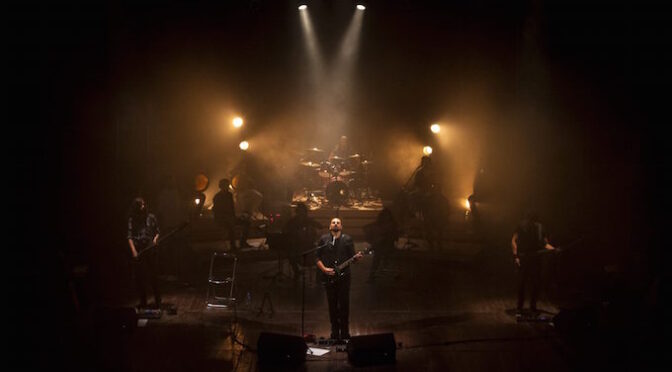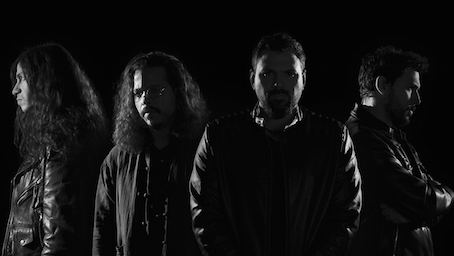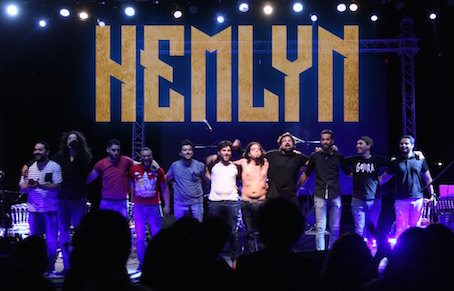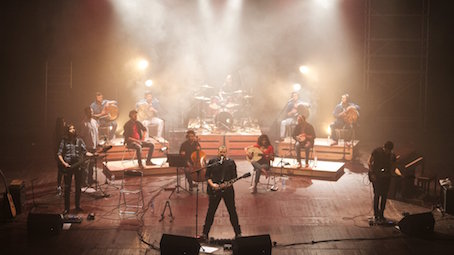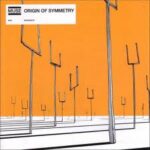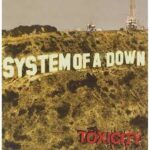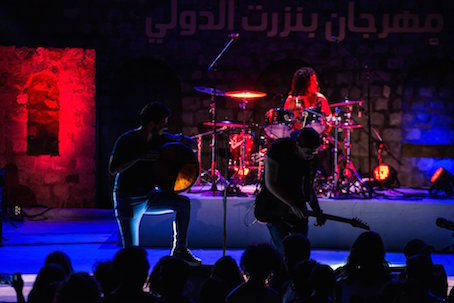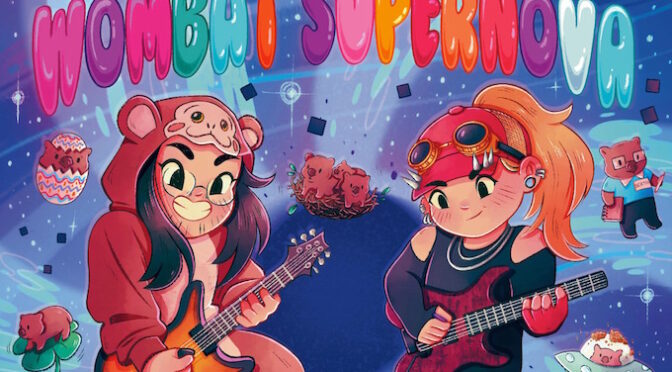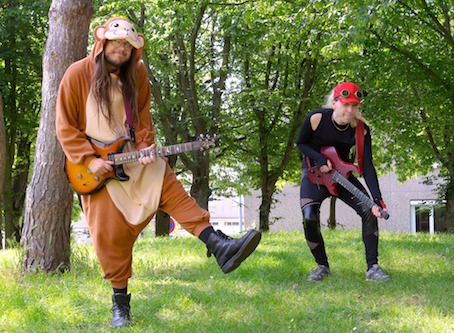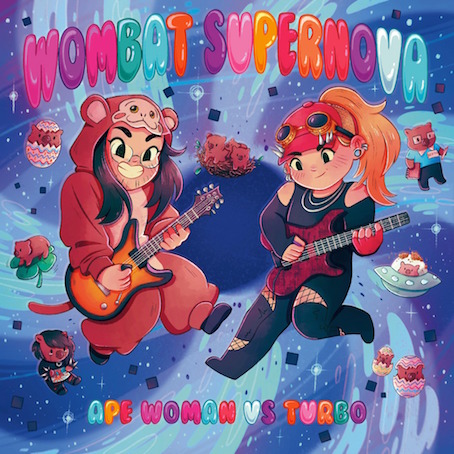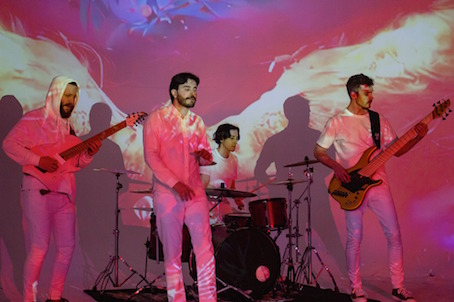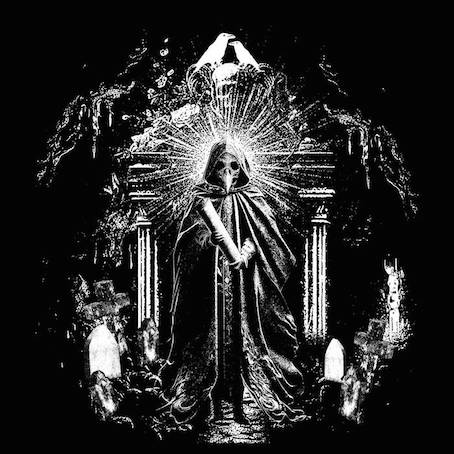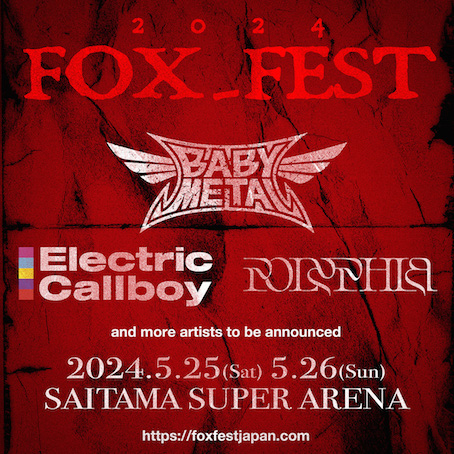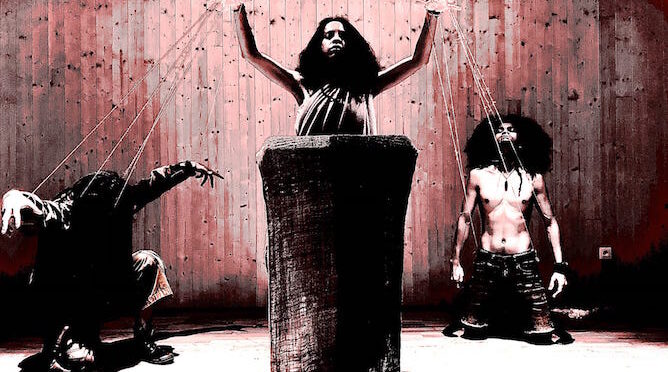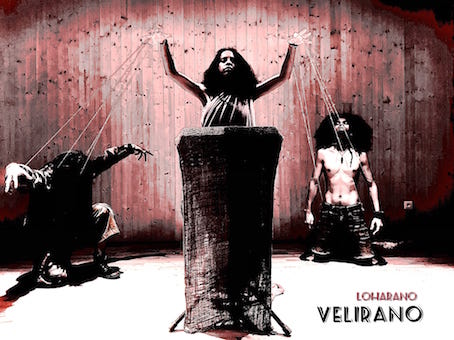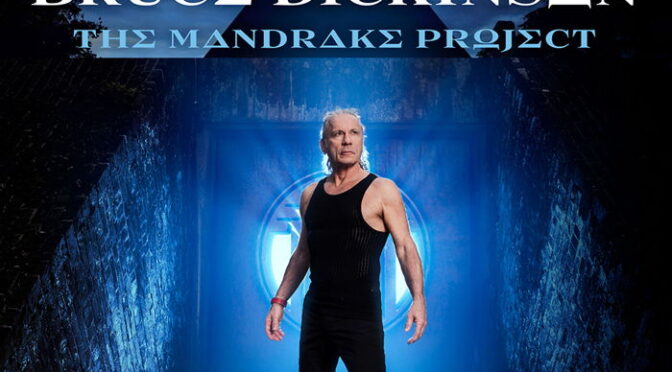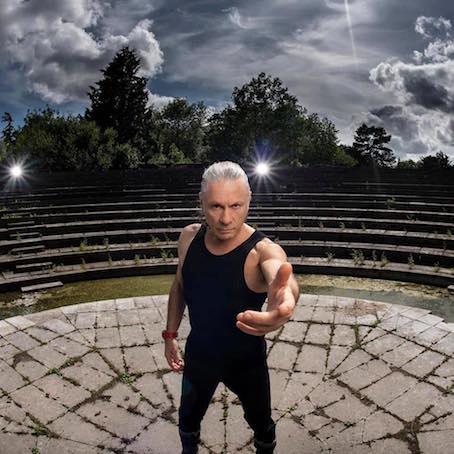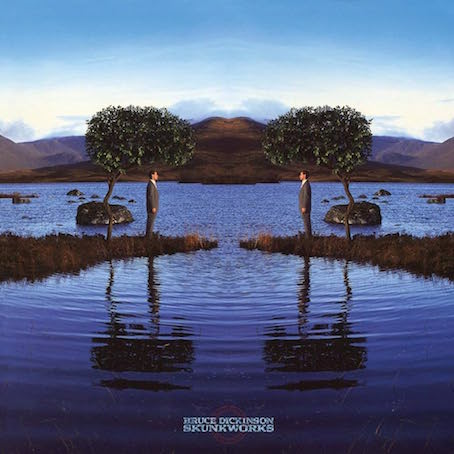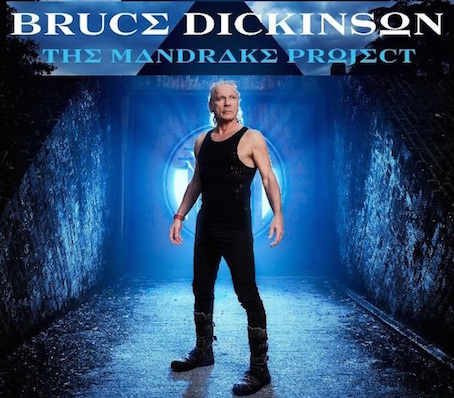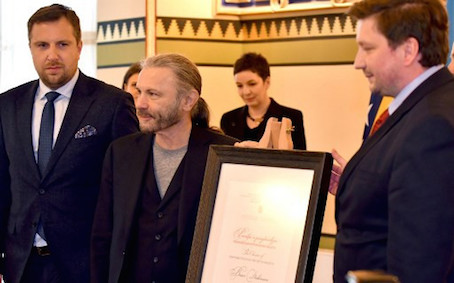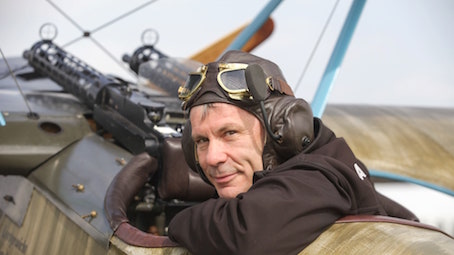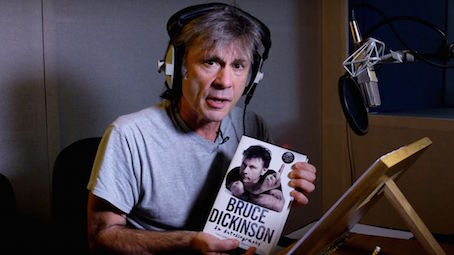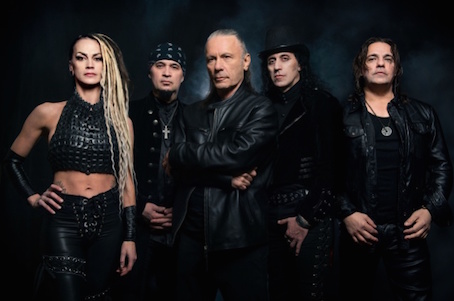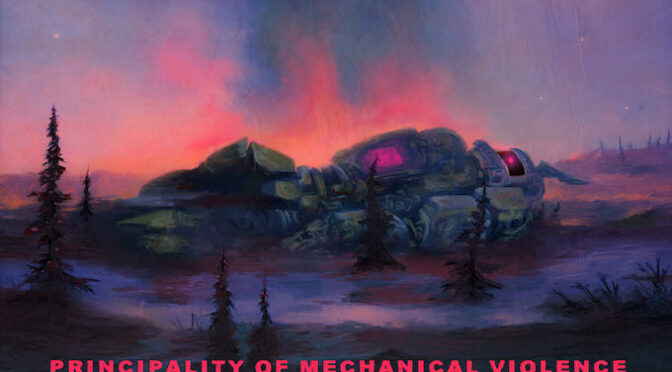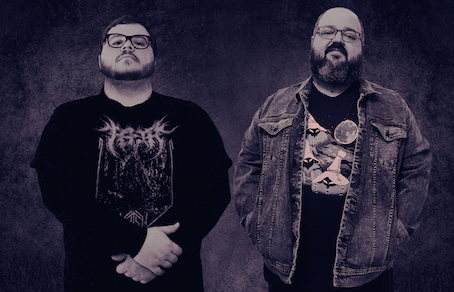EXCLUSIVE: INTERVIEW WITH JOE PARRISH OF ALBION !!
“I Prefer To Go Back To The Source Itself, As In The Original Folk Songs And Melodies Themselves, Rather Than The Versions Of That Sound Found In Rock Or Metal Music.”
DISC REVIEW “LAKESONGS OF ELBID”
「僕が ALBION のために書こうとしている音楽は、基本的には精巧でありながら、できれば本物のフォーク・ミュージックをモダンな楽器で演奏し、アレンジにクラシックのアプローチを取り入れたものにしたい。最近のロックやメタルによくあるバージョンではなく、オリジナルの民謡やメロディーのように、起源そのものに立ち返ることを好んでいるんだ」
ある時点で、メタルのトレンドに躍り出た欧州のフォーク・メタルが、徐々にその輝きを失っていったのは、明らかに飽和と画一化が理由でした。それもそのはず。先達のフォーク・メタルから拝借したようなフレーズを満載したフォーク・メタルは、すでに伝統音楽の色香さえ失っていたのですから。その間に、インドや中東、アフリカ、アジア、南米、南太平洋の各地で、メタルの感染力は猛威をふるい、その生命力と包容力で世界中の日常を捉えた “フォーク・ミュージック” と融合を果たしていきました。
では、欧州のフォーク・メタルは消えゆく運命にあるのでしょうか?否。あの JETHRO TULL で薫陶を受け、完全復活の立役者となったギタリスト Joe Parrish 率いる ALBION がその流れを変えつつあります。彼らの音楽は、まがいものではなく、真のフォーク・ミュージックと当時の風景、日常、神話、そしてリュートやフルートのような楽器に根ざしているのですから。
「60年代や70年代のロック・ミュージシャンの多くは、細部まで考えすぎるのではなく、直感的な情熱のようなもので、短期間に多くのこと(ライヴ、アルバム、曲)をやり遂げ、アイデアにコミットする…そんな自信のようなものを持っていたと思う。Ian と一緒に仕事をし、彼とレコーディングをしたことで、僕はただアイデアにコミットし、物事を本当にやり遂げることができるようになったんだ。準備しすぎたり、細かなことで自分を苦しめて最終的な完成を遅らせるのではなく、もう少し自分の直感を信じることができるようになった。芸術の世界では、クリエイティブで多くのアイデアを持っている人の割合が高いが、そのアイデアにコミットし、実現までやり遂げる人の割合はかなり少ないからね」
さらに、ALBION にはかつての偉大なミュージシャンに備わっていた直感力を兼ね備えています。Joe が JETHRO TULL を離れたのも、まさにそれが理由。狂気のフラミンゴこと Ian Anderson と仕事をする中で学んだ、直感のアイデアを具現化する力。そうして彼はビッグ・バンドを離脱して、アーサー王伝説とその時代をプログ・メタル、フォーク・メタルに投影するアイデアを、完成させる道を選んだのです。
「逃避という側面は極めて重要なものだ。すべての素晴らしい芸術は、何らかの形で “トランスポート” する能力を持っている。よく、つらい時や状況を乗り切るために、特定の曲や音楽のことを口にする人がいるけど、それはよくわかるよね。ある曲や作品に惚れ込んだとき、その曲や作品によって日々の感情や経験が大きく変わることがある。それがアートや音楽の “変容力” なんだ!」
そうして完成を見た “Lakesongs of Elbid” には、アートに込められた “変容力” が備わっています。JETHRO TULL に傾倒した OPETH のような、現代的なリフワークに目覚めた BLIND GUARDIAN のような、その新鮮なフォーク・メタルの息吹は、リスナーの憂鬱や喪失を抱きしめながら、その感情をポジティブに変容させ、そして歴史上のめぐるめくファンタジーへと誘います。ALBION にとっての “聖杯” とは、リスナーの心を変容させる音の葉のこと。そうして彼らは、プログレッシブでフォーキーなメタルの王位継承を目指し、邁進していくのです。
今回弊誌では、Joe Parrish にインタビューを行うことができました。「自分たちが聴きたくなるような音楽を作っているだけさ。それがアーティストとしての誠実さを保つ唯一の方法なんだ。他人をなだめたり、アピールしたり、迎合したりするようなことを始めた時点で、アーティストではない。いやまあ、アーティストなんだろうけど、不誠実極まりない人間になる。それは、作品にあらわれるよね」 どうぞ!!
ALBION “LAKESONGS OF ELBID” : 10/10
INTERVIEW WITH JOE PARRISH
Q1: First, can you tell us what kind of music you grew up listening to?
【JOE】: I grew up listening to folk collections and my mother played me classical music from a very young age. When I was about 5 or 6 I learned how to use my parents’ old record player, so I went through all the vinyl they had from the 70s when they were at university. My favourites at that age were LPs by Led Zeppelin, Deep Purple, The Beatles, Steeleye Span, Jethro Tull, Yes, Renaissance and many more.
As I got into my teens I got very much into metal music, my favourite band at the time being Iron Maiden. In fact they still are one of my favourites. I loved (some of) the progressive side of metal too, particularly the band Opeth, but all through these periods I had an affinity for traditional folk music and certain classical music.
Q1: 本誌初登場です!まずは、あなたの音楽的なバックグラウンドからお話ししていただけますか?
【JOE】: フォークのコレクションを聴いて育ち、母は幼い頃からクラシック音楽を聴かせてくれた。5歳か6歳のときに両親が持っていた古いレコード・プレーヤーの使い方を覚えたので、両親が大学に通っていたころの70年代のレコードを全部聴いたんだ。その頃のお気に入りは、LED ZEPPELIN, DEEP PURPLE, THE BEATLES, STEELEYE SPAN, JETHRO TULL, YES, RENAISSANCE などのLPだったな。
10代になるとメタルにのめり込んだ。当時好きだったバンドは IRON MAIDEN だったね。実際、今でも大好きなバンドのひとつだ。メタルのプログレッシブな側面も(一部は)好きで、特に OPETH が好きだった。ただ、すべての時期を通じて、僕は伝統的な民族音楽や特定のクラシック音楽には常に親近感を持っていたよ。
Q2: Albion is an archaic term for Great Britain, right? In other words, is there an intention in this name to connect the sounds and culture of 2000 years ago to the present?
【JOE】: Yes, absolutely right. The word is quite common, and we are aware there are many other bands with this word in their name, but none in our opinion (apart from The Albion Band) who actually do what such a name suggests musically or conceptually.
Lyrically and musically we are very much connecting with the mythology, history and folk music tradition of Great Britain (and Ireland too) in everything that we do, so despite some people saying it’s not an original name, so far no one who has that name seems to be doing this in the dedicated, purist sense that we are.
Q2: “Albion” とはグレート・ブリテン島を指す古い言葉ですよね?
つまり、ALBION というバンド名には、2000年前の英国の音や文化を現在につなげようという意図が込められているのでしょうか?
【JOE】: うん、その通りだよ。この言葉はとても一般的で、この言葉をバンド名に持つバンドが他にもたくさんあることは知っているけれど、(The Albion band を除けば)この名前が示唆する音楽的、概念的なことを実際にやっているバンドはないと僕らは思っている。
歌詞的にも音楽的にも、僕たちはイギリス、そしてアイルランドの神話、歴史、民族音楽の伝統に深く関わっているんだ。だから、オリジナルの名前ではないと言う人がいるのもわかるけど、今のところ、僕たちのような熱心で純粋な意味で、この名前をつけている人はいないようだからね。
Q3: Joe was with Jethro Tull for 4 years and was instrumental in their complete revival.
Did you leave Jethro Tull to focus all your energy on Albion? What did you learn from Sir Ian Anderson?
【JOE】: That’s nice of you to say, although I wouldn’t go that far – hah! Yes, I left Tull in order to have more time and energy to put into my own music which is of course Albion.
I think a lot of rock musicians from the 60s and 70s had this kind of confidence whereby they would just commit to ideas and get a lot done (shows, albums, songs) in a short period of time with a kind of intuitive panache rather than overthinking every detail, which I am guilty of doing. Working with Ian and recording with him helped me get better at just committing to ideas and just really getting things done and trusting your instinct a bit more rather than over-preparing and torturing yourself over minute details and then delaying the completion of the final thing.
A high percentage of people in the arts are creative and have a lot of ideas, but it’s a much smaller percentage of those people who commit to those ideas and see them all the way through to fruition.
Q3: あなたは JETHRO TULL に4年間在籍し、彼らの完全復活に貢献しました。バンドを離れたのは、ALBION に全力を注ぐためですか?Ian Anderson から学んだことはなんですか?
【JOE】: そこまで貢献したわけではないと思うけど、そう言ってくれるのはうれしいね!(笑) そう、僕は自分の音楽により多くの時間とエネルギーを注ぐためにタルを離れた。
60年代や70年代のロック・ミュージシャンの多くは、細部まで考えすぎるのではなく、直感的な情熱のようなもので、短期間に多くのこと(ライヴ、アルバム、曲)をやり遂げ、アイデアにコミットする…そんな自信のようなものを持っていたと思う。Ian と一緒に仕事をし、彼とレコーディングをしたことで、僕はただアイデアにコミットし、物事を本当にやり遂げることができるようになったんだ。準備しすぎたり、細かなことで自分を苦しめて最終的な完成を遅らせるのではなく、もう少し自分の直感を信じることができるようになった。
芸術の世界では、クリエイティブで多くのアイデアを持っている人の割合が高いが、そのアイデアにコミットし、実現までやり遂げる人の割合はかなり少ないからね。
Q4: Of course you guys are more metallic and modern, (Sometimes remind me Opeth, Blind Guardian) But with its beautiful flute tones and wonderful folky, epic tunes, Albion is clearly infused with what you have developed at Jethro Tull, would you agree?
【JOE】: Tull were an influence even before I joined the band, so their sound has had an effect on the sound of Albion, however I think a lot of people who listen to Tull and listen to rock probably only hear the flute in that context, so they associate the instrument almost exclusively with Tull.
As I said, I listen to a lot of folk and classical where you hear flute all the time, and certain types of melody that far predate rock music. The music I try to write for Albion is essentially elaborate but (hopefully) authentic folk music played on modern instruments with a classical approach to the arrangement. These days I prefer to go back to the source itself, as in the original folk songs and melodies themselves, rather than the versions of that sound found in rock or metal music.
Q4: もちろん、あなた方はよりメタリックでモダンですが(時に OPETH や BLIND GUARDIAN を思い起こさせる)、美しいフルートの音色とフォーキーで壮大な曲調を持つ ALBION の音楽には、明らかにあなたが JETHRO TULL で培ったものも注ぎ込まれていますよね?
【JOE】: タルは僕がバンドに加入する前から影響を受けていたから、もちろん ALBION のサウンドに影響を及ぼしているよ。ただ、タルを聴いてロックを聴く人の多くは、おそらくフルートという楽器をほとんどタルのものとしか連想していないのではないだろうか。
さっきも言ったように、僕はフォークやクラシックをよく聴くけど、そこにはいつもフルートがあるし、ある種のメロディーはロックよりずっと前からある。僕が ALBION のために書こうとしている音楽は、基本的には精巧でありながら、できれば本物のフォーク・ミュージックをモダンな楽器で演奏し、アレンジにクラシックのアプローチを取り入れたものにしたい。最近のロックやメタルによくあるバージョンではなく、オリジナルの民謡やメロディーのように、起源そのものに立ち返ることを好んでいるんだ。
Q5: The album also includes a tribute to the Merlin TV series? Is the story of King Arthur the backbone of “Lakesongs of Elbid”?
【JOE】: The Arthurian legend is the backbone of Albion in general. That story and cycle permeates so much of the mythology and legend from Britain to varying degrees. Even the tales that seem unrelated often have references to it or actually exist in the same mythical universe. Like all great legends it has worn different clothes throughout each era of its retelling, and yet the core meaning and atmosphere of the myth itself remains the same.
The Merlin miniseries is the one with Sam Neill from 1998, not the later TV series from 2008 which is more for children, although has some nice moments. One of my earliest memories is seeing the 1998 one around Christmas of that year when I would have been 3 years old and falling in love with the music and the story. Watching it now it has some goofy moments and questionable effects, but it is the greatest soundtrack ever written in my opinion and the overall portrayal captures the essence of the legend and all it’s nostalgia, melancholy, chivalry and romance extremely effectively.
Q5: このアルバムには、TVシリーズ “魔術師マーリン” へのオマージュも含まれていますね。”Lakesongs of Elbid” のバックボーンはアーサー王の物語しょうか?
【JOE】: アーサー王伝説は ALBION 全体のバックボーンだ。アーサー王物語とサイクルは、程度の差こそあれ、英国に伝わる神話や伝説の多くに浸透している。一見無関係に見える物語でさえ、アーサー王伝説を参照したり、実際に同じ神話の世界に存在していたりする。すべての偉大な伝説がそうであるように、この神話もまた、語り継がれる各時代を通じて異なる姿を装ってきたが、神話そのものの核心的な意味と雰囲気は変わらない。
マーリンのミニシリーズは1998年にサム・ニールが出演したもので、2008年に放映された子供向けのテレビシリーズではないよ。僕の最も古い記憶のひとつは、3歳だったはずの1998年のクリスマスの頃にマーリンを見て、その音楽とストーリーに惚れ込んだことなんだ。今観ると、ベタな場面や疑問の残る効果もあるけど、僕の中では史上最高のサウンドトラックだ。全体的な描写は、伝説の本質と、ノスタルジー、哀愁、騎士道精神、ロマンスのすべてを極めて効果的にとらえているね。
Q6: In fact, your music would make a great soundtrack to a fantastic movie or video game! For example, Elder scrolls or Lord of the Rings. Is there any particular content for which you would like to create a soundtrack?
【JOE】: I think of songs as being soundtracks in themselves really, that’s how I am guided when writing a song’s structure and what should happen next. Listening to Iron Maiden they essentially wrote mini soundtracks to films they watched, books they read, poetry etc. Actually the new Dune film came out recently and they have an excellent song that acts as a metal soundtrack to Dune called ‘To Tame a Land’.
I would love to make an album made up of songs depicting things from Tolkien’s legendarium, like character-based songs inspired by The Silmarillion, or other events predating the Lord of the Rings. I’d also like to do a more acoustic or slightly twee album that acted as a soundtrack for something like The Canterbury Tales, or Beowulf or something like that. I also toyed with the idea of doing a song to represent each piece by the artist Gustave Doré for ‘Idylls of the King’ by Tennyson.
A trilogy of albums for the three stages of the afterlife as depicted in Dante would also be very cool, and in fact also depicted in another series of works by Doré.
Something by Shakespeare could also be made very folky and fun. So many great things to represent with music – not enough hours in the day!.
Q6: 実際、あなたの音楽は素晴らしい映画やビデオゲームのサウンド・トラックになるでしょうね!例えば、エルダースクロールやロード・オブ・ザ・リング。いつかサウンド・トラックを作りたいコンテンツはありますか?
【JOE】: 僕らの曲はそれ自体がサウンド・トラックだと思っていて、曲の構成や次に起こるべきことを書くときに、物語のように導かれるんだ。IRON MAIDEN を聴いていると、彼らは基本的に自分たちが観た映画や読んだ本、詩などのミニ・サウンドトラックを書いていることに気づくだろう。実際、最近 “Dune” の新作が公開されたけど、彼らには “To Tame a Land” という “デューン” のメタル・サウンドトラックのような素晴らしい曲がある。
トールキンの伝説的な作品に登場するもの、例えば “シルマリリオン” にインスパイアされたキャラクター・ベースの曲や、”指輪物語” 以前の出来事を描いた曲で構成されたアルバムを作ってみたいね。また、”カンタベリー物語” や “ベオウルフ” のような作品のサウンドトラックのような、アコースティックでちょっと小粋なアルバムも作ってみたいな。テニスンの “王の牧歌” のために、ギュスターヴ・ドレという画家の作品ごとに曲を作るというアイデアも考えたことがあるね。
ダンテに描かれている死後の世界の3つの段階を表現した3部作のアルバムもとてもクールだし、実際、それはドレの別の作品シリーズにも描かれている。
シェイクスピアの作品も、とてもフォーキーで楽しいものになるだろう。音楽で表現できる素晴らしいものはたくさんあるんだ!
Q7: War, division, pandemic…Yet, light and hope still exist in your music. The world is full of lonely or oppressed people, and your record is a perfect proof that metal and progressive music is a place to escape from such real world, and even a place to get resilience, would you agree?
【JOE】: Yes, the escapism aspect is an extremely important one. All great art has the ability to transport in some way or other. People often mention certain songs or pieces of music as helping them through a tough time or situation, which I totally get. When you fall in love with a song or piece it can really alter your day to day feeling and experience. That’s the transformative power of art and music. Three days ago I listened to an Irish folk band from the 70s called Planxty for the first time, and they have a song that is a short medley called ‘Raggle Taggle Gypsy/Tabhair Dom Do Lamh’ where the first half is a Scottish folk song and the second half is a beautiful Irish sort of waltz, both dating from about the 17th and early 18th centuries. They do a short segue between the two pieces in the middle and it’s such a magic moment where the chords become very major and warm, like a light shining through the clouds, and then the more nostalgic, yearning Irish waltz begins. Anyway, I bring it up because it lifted my spirits almost instantly, and with lasting effect.
Q7: 戦争、分断、パンデミック…そんな暗い世界においても、あなたの音楽には光と希望が存在します。世界は孤独な人々や抑圧された人々で溢れています。あなたのアルバムは、メタルやプログレッシブ・ミュージックがそうした現実世界から逃避できる場所となり、さらには回復力を得る場所となり得ることを完璧に証明していますね?
【JOE】: そう、逃避という側面は極めて重要なものだ。すべての素晴らしい芸術は、何らかの形で “トランスポート” する能力を持っている。よく、つらい時や状況を乗り切るために、特定の曲や音楽のことを口にする人がいるけど、それはよくわかるよね。ある曲や作品に惚れ込んだとき、その曲や作品によって日々の感情や経験が大きく変わることがある。それがアートや音楽の “変容力” なんだ!
3日前、Planxty という70年代に活躍したアイルランドのフォーク・バンドを初めて聴いたんだけど、彼らには “Raggle Taggle Gypsy/Tabhair Dom Do Lamh” という短いメドレーのような曲がある。途中、2つの曲の間に短いセグエが入るのだけど、和音がとてもメジャーで暖かくなり、雲の切れ間から光が差し込むような魔法のような瞬間だ。その後、よりノスタルジックで憧れのアイルランド・ワルツが始まる。とにかく、僕がこの曲を例に取り上げたのは、この曲が僕の気分を瞬時に高揚させ、その効果が持続したからなんだ。まさに変容力だね!
Q8: Perhaps your music would be described as prog-folk or prog-metal. Many of the prog giants are old and have passed away. Meanwhile, the world is dominated by the instant culture of social networking and clippings, and few young people will bother to take the time and trouble to pursue epic and complex prog. So, What was it that drove you guys to the prog in such a situation?
【JOE】: Well we just make the music that we would want to listen to ourselves. It’s the only way to maintain integrity as an artist. As soon as you start doing things to appease others or to appeal or to pander you’re not an artist. Well you are one but you’re an insincere and disingenuous one which will always be apparent in what you’ve created. We won’t and in fact can’t make anything with complete sincerity that isn’t this type of music. It’s a very true expression of who we are and what we like.
Q8: おそらくあなたの音楽は、プログ・フォークやプログ・メタルと表現されるでしょう。プログの巨人の多くは高齢となり、他界した人も少なくありません。
一方で、世の中はSNSや切り取りのインスタント文化に支配され、わざわざ時間と手間をかけて壮大で複雑なプログを追求する若者はほとんどいません。そのような状況の中で、あなたたちをプログに駆り立てるものは何ですか?
【JOE】: 自分たちが聴きたくなるような音楽を作っているだけさ。それがアーティストとしての誠実さを保つ唯一の方法なんだ。他人をなだめたり、アピールしたり、迎合したりするようなことを始めた時点で、アーティストではない。いやまあ、アーティストなんだろうけど、不誠実極まりない人間になる。それは、作品にあらわれるよね。僕たちは、プログといわれる音楽でないものを誠実に作ることはしないし、実際できない。それは、僕たちがどういう人間で、何が好きかということを、とても忠実に表現したものだから。

